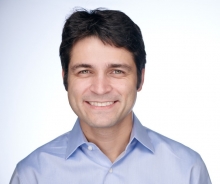CBE & MSE Seminar: Talking to Cells - Biomolecular Engineering for Noninvasive Imaging and Control of Cellular Function

Department of Chemical Engineering
Investigator, Heritage Medical Research Institute
California Institute of Technology, Pasadena, CA
Abstract: The study of biological function in intact organisms and the development of targeted cellular therapeutics necessitate methods to image and control cellular function in vivo. Technologies such as fluorescent proteins and optogenetics serve this purpose in small, translucent specimens, but are limited by the poor penetration of light into deeper tissues. In contrast, most noninvasive techniques such as ultrasound and magnetic resonance imaging – while based on energy forms that penetrate tissue effectively – are not effectively coupled to cellular function. Our work attempts to bridge this gap by engineering biomolecules with the appropriate physical properties to interact with magnetic fields and sound waves. In this talk, I will describe our recent development of biomolecular reporters and actuators for ultrasound and magnetic resonance imaging. The reporters are based on a unique class of gas-filled protein nanostructures from buoyant photosynthetic microbes. These proteins produce nonlinear scattering of sound waves, enabling their detection with ultrasound, and perturb magnetic fields, allowing their detection with MRI. I will describe our recent progress in understanding the biophysical and acoustic properties of these biomolecules, engineering their mechanics and targeting at the genetic level, developing methods to enhance their detection in vivo and expressing them heterologously as reporter genes. Our actuators are based on temperature-dependent transcriptional repressors, which provide switch-like control of bacterial gene expression in response to small changes in temperature. We have genetically tuned these repressors to activate at thresholds within the biomedically relevant range of 32ºC to 46ºC, and constructed genetic logic circuits to connect thermal signals to various cellular functions. This allows us to use focused ultrasound to remote control engineered bacterial cells in vivo. In addition, we have used ultrasound in combination with viral vectors and engineered receptors to provide spatially and cell-type specific noninvasive control over neural activity.
Bio: Mikhail Shapiro is a professor of chemical engineering and an investigator at the Heritage Medical Research Institute at Caltech. The Shapiro laboratory develops biomolecular technologies allowing cells to be imaged and controlled inside the body using sound waves and magnetic fields to enable the study of biological function in vivo and the development of cell-based diagnostic and therapeutic agents. Shapiro received his doctorate in biological engineering from MIT and his bachelor's degree in neuroscience from Brown University, and he conducted postdoctoral research at the University of Chicago and UC Berkeley, where he was a Miller Fellow. Shapiro’s awards include the Packard Fellowship, the Pew Scholarship, the Camille Dreyfus Teacher-Scholar Award and the Roger Tsien Award for Excellence in Chemical Biology. More information about the Shapiro Lab can be found online at shapirolab.caltech.edu.
Host: Allon Hochbaum
Share
Upcoming Events
-
MSE 298 Seminar: Catalyst Design For Clean Energy Technologies
-
MAE 298 SEMINAR: Biomechanics of Rotator Cuff
-
CEE Seminar: BIM and the Digital Twin
-
CEE Seminar: UV-based Treatment Processes for Treatment of Contaminants of Emerging Concern in Context of Water Reuse
-
MSE 298 Seminar: New Platforms For Quantum Sensing and Quantum Computing
